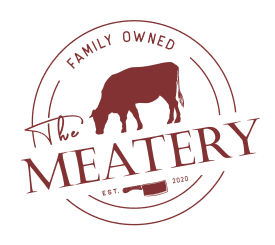History And Mission Of The American Wagyu Association
The American Wagyu Association (AWA) was established in 1990 to promote and protect the development of Japanese Wagyu cattle in the United States. The journey began in 1976 when the first four Japanese Wagyu bulls were imported to the U.S., marking the beginning of American Wagyu production.
The organization's primary mission is to maintain the integrity of American Wagyu breeding through careful documentation and genetic testing. They manage a comprehensive registry system that tracks bloodlines and ensures the authenticity of American Wagyu cattle. This dedication to preservation has been crucial in developing a uniquely American interpretation of this prestigious beef.
Throughout the 1990s and early 2000s, the AWA worked diligently to establish breeding standards and certification processes. They created a framework that allows producers to maintain the essential characteristics of Japanese Wagyu while adapting to American farming practices and consumer preferences. The association also provides educational resources to farmers and ranchers, helping them understand the specific requirements for raising American Wagyu cattle.
Sustainability And Animal Welfare
American Wagyu producers have embraced sustainable farming practices while maintaining high animal welfare standards. These cattle are typically raised with a strong emphasis on environmental stewardship, including rotational grazing practices that help preserve grasslands and reduce soil erosion.
The welfare of American Wagyu cattle is paramount in their production. Unlike some intensive farming methods, these animals are given ample space to roam and graze naturally. Many producers implement stress-reduction techniques, understanding that calm, well-cared-for cattle produce better quality meat.
Environmental considerations are integrated into every aspect of American Wagyu farming. Producers often utilize:
- Water conservation methods
- Natural fertilization through managed grazing
- Local feed sourcing to reduce transportation impacts
- Waste management systems that benefit soil health
What breed is American Wagyu?
American Wagyu is a crossbreed that combines Japanese Wagyu genetics with traditional American cattle breeds. The most common combination is Japanese Black Wagyu (Kuroge Washu) crossed with Angus cattle, though other variations exist. This crossbreeding creates a unique hybrid that balances the exceptional marbling characteristics of Japanese Wagyu with the robust growth traits of American breeds.
The genetic composition typically includes:
- F1: 50% Wagyu, 50% Angus
- F2: 75% Wagyu, 25% Angus
- F3: 87.5% Wagyu, 12.5% Angus
These percentages can vary based on specific breeding programs and goals. Some producers maintain purebred Japanese Wagyu lines, while others focus on various crossbreeding combinations to achieve specific meat characteristics.
Why is Japanese Wagyu Better than American Wagyu?
Japanese Wagyu is often considered superior to American Wagyu due to several key factors. The pure Japanese bloodlines, combined with centuries-old traditional raising methods, result in beef with unparalleled marbling and texture. The strict regulations and intensive care practices in Japan create an environment where these cattle can develop their signature characteristics to the fullest extent.
Key differences include:
- Higher degree of marbling (BMS 8-12 vs 4-7 for American Wagyu)
- More refined flavor profile
- Stricter breeding controls
- More specialized feeding programs
However, it's important to note that American Wagyu serves a different market segment, offering excellent quality at a more accessible price point while maintaining many desirable Wagyu characteristics.
Flavor And Marbling Differences
American Wagyu exhibits distinct flavor and marbling characteristics that set it apart from both traditional American beef and Japanese Wagyu. The marbling pattern typically shows a balance between the intense intramuscular fat of Japanese Wagyu and the leaner profile of American breeds.
Flavor characteristics include:
- Rich, buttery taste with a robust beef flavor
- Complex umami notes
- Tender texture with good moisture retention
- Balanced fat-to-meat ratio
The marbling score usually ranges from BMS 4-7, creating a premium eating experience while maintaining the familiar beef flavor that American consumers prefer.
Cooking Methods
Cooking American Wagyu requires careful attention to preserve its unique qualities. The recommended methods include:
- Pan-searing for steaks
- Reverse searing for thick cuts
- Grilling at moderate temperatures
- Sous vide cooking for precise temperature control
Best practices for cooking American Wagyu include:
- Bringing meat to room temperature before cooking
- Using minimal seasoning to highlight natural flavors
- Cooking to medium-rare (130-135°F)
- Allowing proper rest time after cooking
The high marbling content requires careful temperature control to prevent excessive fat rendering while ensuring proper doneness.


